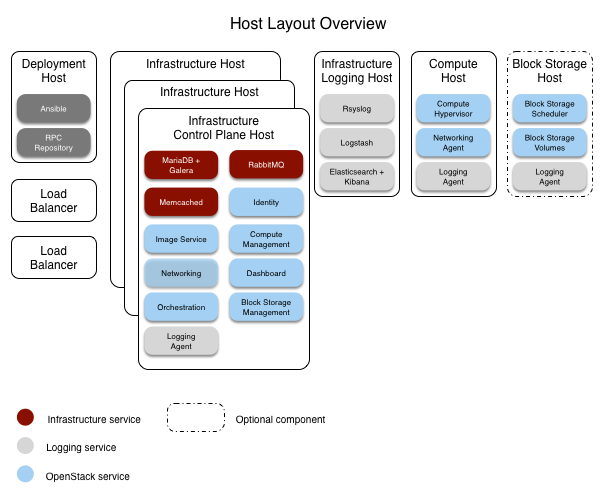Home OpenStack-Ansible Installation Guide
Host layout¶
The recommended layout contains a minimum of five hosts (or servers).
- Three control plane infrastructure hosts
- One logging infrastructure host
- One compute host
To use the optional Block Storage (cinder) service, a sixth host is recommended. Block Storage hosts require an LVM volume group named cinder-volumes. See the section called “Installation requirements” and the section called “Configuring LVM” for more information.
The hosts are called target hosts because Ansible deploys the OSA environment within these hosts. The OSA environment also recommends a deployment host from which Ansible orchestrates the deployment process. One of the target hosts can function as the deployment host.
At least one load balancer must be used to manage the traffic among the target hosts. This can be any load balance of any type (hardware, haproxy, etc). While OpenStack-Ansible has playbooks and roles for deploying haproxy it’s recommended for deployers to use physical load balancers when moving to production.
Infrastructure Control Plane target hosts contain the following services:
- Infrastructure:
- Galera
- RabbitMQ
- Memcached
- Logging
- Repository
- OpenStack:
- Identity (keystone)
- Image service (glance)
- Compute management (nova)
- Networking (neutron)
- Orchestration (heat)
- Dashboard (horizon)
Infrastructure Logging target hosts contain the following services:
- Rsyslog
Compute target hosts contain the following services:
- Compute virtualization
- Logging
(Optional) Storage target hosts contain the following services:
- Block Storage scheduler
- Block Storage volumes
Figure 1.1. Host Layout Overview
